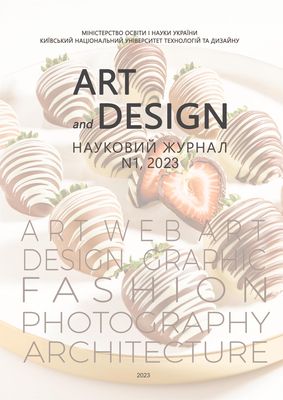CONCEPTUAL METAPHORS IN AUGMENTED REALITY PROJECTS
DOI:
https://doi.org/10.30857/2617-0272.2023.1.3Keywords:
interface design, AR design, spatial AR, video mixingAbstract
Purpose. The objective of this study is to conduct a semiotic analysis of augmented reality projects, with the aim of establishing patterns and identifying the most common conceptual metaphors. The study seeks to determine the impact of these metaphors on functional and symbolic form.
Methodology. To achieve the research goal, the visual materials were subjected to visual-analytical, formal, functional, and semiotic analysis methods.
Results. The present study identified the eight most common metaphors used in AR project design, namely the magic mirror, false window, active print, X-ray vision, geo-layer, aquarium, visor, and flashlight. The impact of these metaphors on the functional-figurative form can vary depending on the metaphor chosen, and may set more blurred or specific boundaries. It was found that metaphors differ not only in their figurative-semantic differences, but also in the viewer’s position regarding representation, the type of first or third-person view, the impact on the imagery of the content, and the nature of interaction with space. While most metaphors benefit from the use of three-dimensional graphics, some, such as mirrors, active print, and sights, can use two-dimensional graphics without depriving AR of the feeling of naturalness. One technique for playing with metaphors is to go beyond conventional boundaries and manipulate space. The study also revealed that AR based on video mixing more frequently uses metaphors than optical mixing, which can directly merge with the environment. It was demonstrated that using the same metaphor does not limit the creative potential in solving tasks, and leaves the designer sufficient space for maneuvering and the possibility of both literal and formal following of the metaphor. Overall, the findings of this study contribute to a better understanding of the role of metaphors in AR project design and provide insights for designers to effectively use metaphors to enhance user experience.
Scientific novelty. An analysis of augmented reality (AR) projects was conducted with the aim of identifying conceptual metaphors. A synthesis of these conceptual metaphors was performed, followed by a typology-based classification of the AR projects grounded in the identified metaphors.
Practical significance. The findings of this research contribute to the theoretical foundation of designing AR products by providing a framework for representing AR design concepts. The identified metaphors can be utilized as a guide for designers to develop effective AR interfaces.

